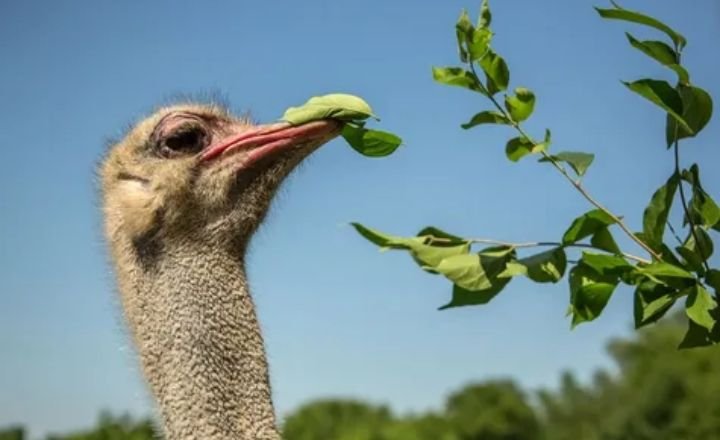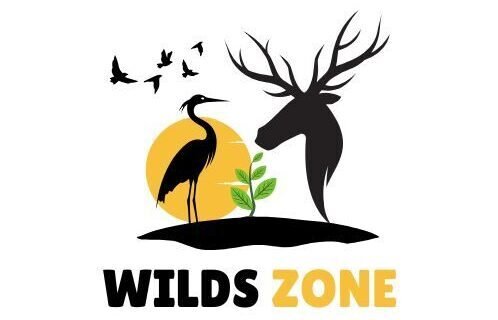Emu is a fascinating flightless bird that resembles a quirky blend of an ostrich and a dinosaur. With their towering height and long, lanky legs, these peculiar birds can spark curiosity about not just their behavior but also what fuels their energetic antics.
What do emus eat? seven common foods that make up the staple diet of emu that keeps emus healthy and active. From seeds to fruits, these birds are searchers with greedy appetites as varied as the landscapes they inhabit.
What Do Emus Eat in General?
Emus, the iconic flightless birds native to Australia, have a diverse diet that reflects their herbivorous tendencies. These large birds primarily feast on grains, grass, and a variety of fruits and berries found in their natural habitat.
Emus have been noted to occasionally consume insects, particularly non-poisonous ones that can be abundant in their environment. While ladybirds may seem unassuming and small, these vibrant critters often become easy targets for emus looking for a protein boost alongside their plant-based meals.
They eat inclusion of bone meal rich in calcium and phosphorus in conjunction with chicken eggs In addition to foraging plants and seeds with vigor, emus play an essential part in seed dispersal. As they eat various berries and grains, they help maintain vegetation diversity.
What Do Emus Eat in the Wild?

These flightless birds are omnivorous foragers, deriving nutrients from a diverse range of sources. What do emus eat in captivity? While their diet primarily includes seeds and fruits, they also demonstrate a curious penchant for insects and arthropods.
By consuming everything from beetles to grasshoppers, emus can tap into a nutrient-rich resource that complements their plant-based meals. The behavioral patterns of emus reveal how they navigate their habitats to exploit these food sources effectively.
The plant matter, insects, and arthropods emus eat
Emus eat around 43 species of plants that vary significantly across seasons and regions. For instance, during the wet season when lush vegetation flourishes, emus feast on succulent shoots and vibrant fruits rich in hydration and nutrients. In arid months, they rely more heavily on seeds and dry grasses.
Certain plants with little nutritional value form the backdrop of their habitat but remain untouched by these omnivorous birds. Emus diet has a special taste for arthropods like grasshoppers, flies, beetles, spiders, centipedes, and millipedes.
Stones
These industrious foragers consume not only plant matter but also insects ,and stone found in their habitat. Interestingly, stones play a role in this diet; they help grind down tough vegetation in the emu’s gizzard, ensuring efficient digestion.
Stones play a fascinating role in the diet and digestion of emus. This behavior stems from their unique digestive system; emus possess a muscular stomach that relies on grit to break down tough food materials effectively by grinding of fibrous plant material, ensuring better nutrient absorption.
What Do Domestic Emus Eat?

Domestic emus are fascinating creatures with diverse emu diet that consist of a variety of nutrient-dense options. Domestic emus have different eating habits compared to other poultry. While many birds thrive on seed-based diets, emus exhibit a preference for larger items.
By mixing highly nutritional meals with occasional mouth-watering treats from animal products, domestic emus embody a unique approach to dietary versatility that keeps them healthy and thriving in varied settings.
Bone meal
The dietary needs of domestic emus, it’s intriguing to consider the role of bone meal and by products from slaughterhouses. They serve a dual purpose in enhancing animal nutrition while also addressing waste management issues.
Bone meal, rich in calcium and phosphorus, plays a vital role in supporting the skeletal development and overall health of the emus. By utilizing this nutrient-dense supplement, farmers not only optimize the emus’ growth but also reduce environmental strain by repurposing.
Chicken eggs
Chicken eggs are a powerhouse of protein, providing essential nutrients that support overall health and well-being. These nutrient-dense capsules not only bolster muscle repair and growth but also provide vital vitamins and minerals, such as B12, which is crucial for energy production.
Considering dietary needs, especially in communities where emus may roam freely or coexist with poultry farms, it’s intriguing to explore the symbiotic relationship between these animal species.

Mice and lizards
In the wild, emus are opportunistic eaters, and their diet is as diverse as their roaming grounds. Mice and lizards, though seemingly insignificant components of many ecosystems, play an important role in the food web.
When these small creatures find themselves in a domestic environment they often become easy targets for emus searching for a protein-rich snack. In the wild mice and lizards are found easily and this becomes a good food source for emus.
Grains
For domestic emus, grains emerge as a staple in their diet, with wheat reigning supreme. While these flightless birds are known for their eclectic eating habits, ranging from fruits to insects, they show a distinct affinity for wheat.
This preference is due to nutritional benefits that wheat offers, such as energy-rich carbohydrates and essential proteins that support their overall health. These birds by ensuring ample access to high-quality grains like wheat.
Charcoal
Charcoal plays a surprisingly critical role in the digestive health of emus, acting as an essential supplement for these unique birds. Emus naturally seek out specific types of stone and charcoal in their environments, ingesting them to assist their bodies in breaking down food more efficiently.
It’s a form of natural self-medicating that helps smooth out the digestive process, allowing them to extract maximum nutrients from their diets. Domestic emus are raised away from their natural habitat, finding suitable sources of charcoal and stones can become challenging.
What Do Emus in the Zoos Eat?
In zoos, birds capture our hearts with their vibrant colors and unique behaviors. Among the remarkable avian residents are the emus, who thrive in environments enriched by both natural and processed foods
Many zoos focus on offering a medley of treats from seeds to specialized bird pellets; only a select few embrace the inclusion of charcoal as part of an emu’s diet. The care taken to provide such care within zoos to mimic natural lifestyles for creatures like rheas and ostriches as well.
Roughage and ratite pellets
Emus, like their larger counterparts the ostriches, have specific dietary needs that reflect their unique physiology and natural behaviors. In zoos, they are often fed a carefully formulated blend of ratite pellets rich in essential nutrients.
The composition typically includes dehydrated alfalfa meal and maize mash, providing not only a protein boost but also fiber that aids digestion. Ingredients like brewer’s yeast and potato protein enriches their diet with vital vitamins and minerals necessary for overall well-being.
Maize gluten feed complements this mixture by ensuring adequate energy levels for these active birds. Interestingly, limestones serve as an excellent source of calcium which supports strong bones and eggshell formation in female emus.
Charcoal
Emus in the zoo have a unique dietary regimen that often surprises visitors. Unlike some wildlife, these flightless birds don’t indulge in charcoal or stones, which are sometimes believed to aid digestion in other species.
Emus do not have this requirement due to differences in digestive mechanics; they manage quite well without them.Instead, their diet primarily consists of specially formulated pellets, fresh fruits, and vegetables that provide essential nutrients tailored for their health needs.
Kale and romaine
Kale and romaine are not just trendy greens for human diets; they play vital roles in the nutritional wellbeing of emus, particularly in zoo settings. These leafy vegetables, cabbage and broccoli, are enriched with potassium, copper, manganese, and vitamin A—elements crucial for the emu’s immune system and overall vitality.
On the other hand, romaine lettuce offers sturdy dark green leaves complemented by firm ribs that enhance texture and crunchiness. This makes romaine appealing to emus as they forage through their meals. Rich in vitamins K and C, this leafy green can help maintain healthy bones while boosting metabolic functions.

What Do Emus Entertaining in the Circuses Eat?
Fruits and vegetables like vibrant red carrots and earthy beets are provided in circuses. The unique sweetness of strawberries paired with the tartness of red currants creates an enticing mix for these birds.
Beets, berries,Strawberries , black currants ,ruby-red gems also known as beetroots are packed with vital nutrients like vitamins A and C, folate, and dietary fiber. They enjoyed a varied diet that contributes significantly to their health and vibrant energy level.
Conclusion
Understanding What do emus eat is essential for their health and well-being. These fascinating birds thrive on a variety of foods, including grains, fruits, vegetables, and insects, which provide them with the necessary nutrients to maintain their energy and vitality.
Seven common foods items into their diet, you can ensure that your emu remains healthy and active. a farmer raising emus or simply an enthusiast to know about the best feeding regimen for these remarkable birds.
FAQs
What is the primary diet of emus?
Emus primarily eat a variety of plants, seeds, fruits, and insects.
Can emus eat meat?
While emus are mostly herbivorous, they may occasionally consume small amounts of meat or other animal protein if available.
How much do emus eat daily?
An adult emu typically consumes about 1-2 pounds (0.45-0.9 kg) of food each day depending on their size and activity level.
